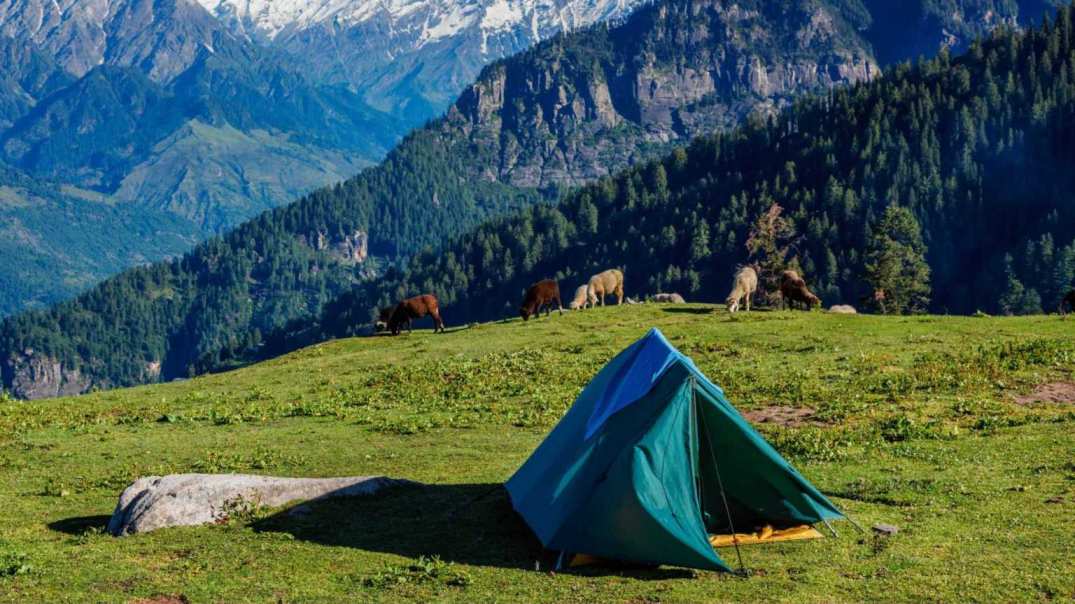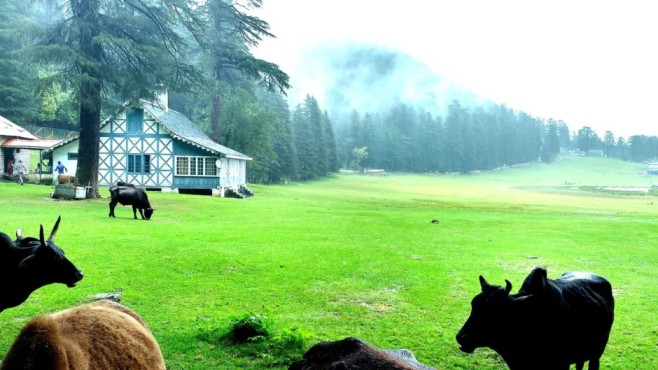
Nestled in the heart of Rajasthan, Ranthambore National Park beckons wildlife enthusiasts to embark on a mesmerizing journey through its sprawling expanse of approximately 392 square kilometers. Beyond being a haven for the majestic Bengal tiger, this wildlife sanctuary is a tapestry of diverse ecosystems, showcasing the richness of India's flora and fauna.
Nestled in the heart of Rajasthan, Ranthambore National Park beckons wildlife enthusiasts to embark on a mesmerizing journey through its sprawling expanse of approximately 392 square kilometers. Beyond being a haven for the majestic Bengal tiger, this wildlife sanctuary is a tapestry of diverse ecosystems, showcasing the richness of India's flora and fauna. Rooted in an 8th-century history, the park is graced by the iconic Ranthambore Fort, a UNESCO World Heritage Site that serves as a testament to the resilience and grandeur of a bygone era. For convenient travel to this wildlife paradise, consider opting for an outstation cab booking or one way taxi service, ensuring a hassle-free journey.
While Ranthambore is celebrated for its thriving Bengal tiger population, the park's biodiversity extends far beyond this majestic feline. Leopards, sloth bears, hyenas, and various deer species, including sambar, chital, and nilgai, coexist in this pristine wilderness. For avid birdwatchers, the park offers a year-round spectacle with over 300 avian species, both residents and migratory, creating a harmonious symphony of nature. The legendary tigress Macchli, alongside other notable tigers, has etched her mark in the park's wildlife history.
To make the most of your Ranthambore adventure, plan your visit between October and June, with the prime exploration months being from October to April. During this period, the weather is mild, enhancing the likelihood of spotting tigers. It's advisable to steer clear of the scorching summer months when the heat can be unforgiving. Consider securing the convenience of a round trip cab booking or booking a one-way trip cab to optimize your travel plans.
Ranthambore National Park is ingeniously divided into multiple zones, each offering a distinct blend of wildlife and historical landmarks. From the buffer Zone 1, famed for tigress Noor and her cubs, to the historically rich Zone 2, housing the 300-year-old Jogi Mahal and Trinetra Ganesh Temple, the park caters to varied interests. Zone 4, home to the legendary Macchli, boasts rocky terrain and serene landscapes, providing a quieter wildlife experience. Zones 6-10, the latest additions, promise novel thrills for wildlife enthusiasts, with reported sightings of Ranthambore's famous fierce tiger, Fateh.
Read: Chill in the Air, Thrill in the Heart: What to Expect at Winter Festival Mount Abu 2023
Choose the Right Time of Day:
Wildlife activity often varies throughout the day. Early mornings and late afternoons tend to be the best times for spotting animals, as many are more active during these cooler periods. Take advantage of both sunrise and sunset safaris for a diverse experience.
Use Binoculars and Cameras Wisely:
Invest in a good pair of binoculars to observe animals from a distance without disturbing them. If you're into photography, familiarize yourself with your camera settings beforehand. Remember to be respectful and considerate, avoiding the use of flash, loud noises, or sudden movements.

Learn Animal Behavior:
Understanding animal behavior can significantly improve your chances of spotting wildlife. Learn about the habits, tracks, and calls of the species you're likely to encounter. This knowledge can help you anticipate movements and position yourself for better sightings.
Respect the Natural Rhythm:
Wildlife safaris are not just about ticking off a checklist of species. Take time to appreciate the smaller details of the ecosystem, such as birds, insects, and plant life. Observe the interconnectedness of the environment to gain a deeper appreciation for the delicate balance of nature.
Pack Essentials:
Carry essentials like sunscreen, insect repellent, a hat, and a refillable water bottle. Dress in layers to accommodate temperature changes, and ensure you have any necessary medications. Being well-prepared allows you to focus on the experience rather than discomfort.
Engage with Local Communities:
Wildlife safaris often overlap with indigenous or local communities. Take the opportunity to learn about their culture, traditions, and conservation efforts. Engaging with locals can provide a richer understanding of the area and its challenges.
Practice Responsible Tourism:
Leave no trace. Respect the natural environment by avoiding littering and staying on designated paths. Support eco-friendly accommodations and tour operators that prioritize sustainability and wildlife conservation.
Stay Flexible:
Nature is unpredictable, and wildlife sightings are not guaranteed. Be flexible with your expectations and enjoy the journey, regardless of whether you encounter the "big five" or other iconic species. Each safari is a unique experience.
Ranthambore National Park stands as a shining jewel in India's wildlife conservation efforts. For an unforgettable adventure, follow expert tips, immerse yourself in the park's rich offerings, and witness the wonders of this enchanting wildlife haven. Whether captivated by the regal Bengal tigers or enchanted by the diverse ecosystems, Ranthambore promises an extraordinary safari experience that transcends the boundaries of time. Consider booking a outstation cab or outstation taxi online for a seamless and comfortable return journey after exploring the captivating wildlife of Ranthambore

2024-01-15 15:53:26

2024-01-11 13:42:56

2024-01-09 18:19:19

2024-01-06 18:03:28

2024-01-05 13:54:46

2024-01-04 13:54:47

2024-01-03 13:48:11

2024-01-02 15:11:46

2023-12-30 13:32:08

2023-12-29 17:07:31

2023-12-27 16:01:17

2023-12-19 13:54:18

Call us : 01149051984
Mail us : query@mapmydestination.com